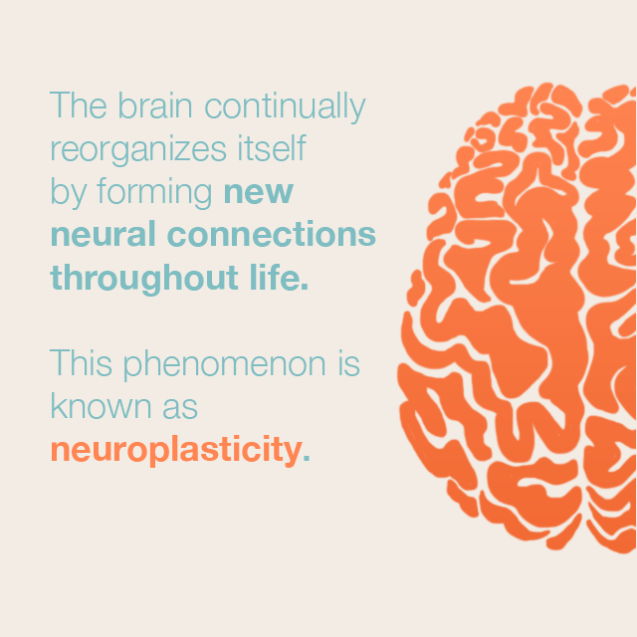
If you're a newbie at meditation, it can be hard to find the time to sit down and practice. Spotify offers a guided mindfulness meditation that you can use to get started. These playlists are created by people who have been there, and they're completely free! Listen to some of their top tracks to decide if they are right for your needs. It can help to integrate meditation into your daily routine.
Headspace, for instance, offers a more holistic approach to mindfulness, with guided meditation for anxiety and stress relief. There are many guided meditations available on Spotify. This playlist is great for beginners and experts alike. You can also use the YouTube channel to find guided meditations by Deepak Chopra if you don't want to meditate.

The Spotify platform plans to grow into all audio formats, but meditation is a rapidly growing market. Its newest partnership with Calm, the creators of meditation app Headspace, is a good example of how well the service is selling. The startup was recently valued in the range of $1bn. It also recently raised $88million in funding. Creative Artists Agency and The New York Times have also backed the startup. The company claims to generate $150 million in revenue per year and has more than one million subscribers.
The 528Hz Healing Meditation playlist will help heal your body with the beautiful sound of healing music. Jason Stephenson discovered guided Meditation in his 30s following a period of depression and anxiety. He started a YouTube channel called Meditation Sleep Music and used his experience to launch it. His channel has over one million subscribers, and over 250 million views. It's an easy and accessible way to make meditation easier.
A class taught by a professional is also available for beginners in meditation. This option is available in several classes for a small charge. Mary Meckley, a renowned meditation teacher, hosts the daily meditation podcast. The podcast lasts for eight minutes. You can choose from a variety of meditations on this podcast. You can also download the Daily Mood podcast for a more relaxed and shorter experience.

Spotify podcasts often feature different media and techniques. The instructions in meditation podcasts can be followed, but the audio lullaby might be too distracting. However, the calming music can help you relax and focus. A guide will lead you through a meditation session that is appropriate for you. You can start with the first few episodes if you are a beginner.
FAQ
How can I live my best everyday life?
Finding out what makes your heart happy is the first step to living a fulfilled life. Once you know what makes you happy, you can work backwards from there. You can also inquire about the lives of others.
You can also find books such as "How to Live Your Best Life" written by Dr. Wayne Dyer. He discusses happiness and fulfillment in every aspect of our lives.
What is the difference in fat and sugar?
Fat is an important energy source, which comes from food. Sugar is a sweetener found in fruits, vegetables, and other foods. Both fats as well as sugars contain the same amount of calories. But, fats have more calories than sugars.
Fats are stored in the body and contribute to obesity. They can lead to cholesterol buildup in the arteries, which could cause heart attacks or strokes.
Sugars are quickly absorbed by the body and provide instant energy. This causes blood glucose levels in the body to rise. High blood glucose levels can be dangerous because it increases the risk of developing type II diabetes.
What is the difference of a virus from a bacteria?
A virus is an organism microscopic that can't reproduce outside its host cells. A bacterium is a single-celled organism that reproduces by splitting itself in two. Viruses have a very small size (about 20 nanometers), while bacteria is larger (up to one micron).
Viruses are usually spread through contact with infected bodily fluids, including saliva, urine, semen, vaginal secretions, pus, and feces. Bacteria can easily be spread from direct contact to contaminated surfaces and objects.
Viruses can enter our bodies through cuts, scrapes, bites, or other breaks in the skin. They can also penetrate the skin through the eyes, nose or mouth.
Bacteria can be introduced to our bodies by cuts, scrapes or burns. They can also be introduced to our bodies by food, water and soil.
Both bacteria and viruses can cause illness. But viruses do not have the ability to multiply within their hosts. They can only infect living cells and cause illness.
Bacteria can grow in their hosts and cause disease. They can even invade other parts of the body. We need antibiotics to get rid of them.
Why should we have a healthy lifestyle to begin with?
Healthy lifestyles lead to happier and longer lives. Regular exercise, healthy eating habits, healthy sleep habits and stress management can all help prevent strokes, heart disease, diabetes, and cancer.
A healthy lifestyle helps us cope better when we are faced with everyday stresses. Having a healthy lifestyle will also boost our self confidence and help us look and feel younger.
Which diet is best for me?
Many factors influence which diet is best for you. These include your age, gender and weight. Consider how much energy and low-calorie foods you consume, as well as whether or not you are a fan of fruits and vegetables.
Intermittent fasting may be a good choice if you want to lose weight. Intermittent fasting is a way to eat only certain meals during the day instead of three large meals. This method may work better than traditional diets which include daily calorie counts.
Research suggests that intermittent fasting may increase insulin sensitivity and lower inflammation. This can result in a reduction in blood sugar levels and a reduced risk of developing diabetes. Intermittent fasting has been shown to promote fat loss as well as improve overall body composition.
How does an antibiotic work?
Antibiotics kill harmful bacteria. Antibiotics can be used to treat bacterial infection. There are many kinds of antibiotics. Some can be taken orally while others are injected. Others are topically applied.
Many people who have been exposed can be prescribed antibiotics. If someone has chicken pox, they might need to take an oral antibiotic in order to prevent shingles. A penicillin injection might be given to prevent pneumonia in someone who has had strep.
Doctors should prescribe antibiotics to children. Children are more likely to experience side effects than adults from antibiotics.
Diarrhea is one of the most common side effects of antibiotics. Other possible side effects include stomach cramps, nausea, vomiting, allergic reactions, headaches, dizziness, and rashes. Most of these symptoms disappear after the treatment is completed.
How often should i exercise?
A healthy lifestyle requires regular exercise. There is no set time limit for exercising. Finding something that you love and sticking with it is the key.
You should aim to do 20-30 minutes of moderate intensity exercise three times per week. Moderate intensity means you'll still be breathing hard after you've finished. This type of exercise burns approximately 300 calories.
Walk for at least 10 minutes four days a weeks if you prefer walking. Walking is low-impact, easy on your joints, and it's also very gentle.
Jogging is an alternative to running. You can do it for as little as 15 minutes each day. Running can help you burn calories and to tone your muscles.
Begin slowly if your are not used to working out. Begin by only doing 5 minutes of cardio five times per week. Gradually increase your cardio time until you reach the goal.
Statistics
- Extra virgin olive oil may benefit heart health, as people who consume it have a lower risk for dying from heart attacks and strokes according to some evidence (57Trusted Source (healthline.com)
- In both adults and children, the intake of free sugars should be reduced to less than 10% of total energy intake. (who.int)
- WHO recommends reducing saturated fats to less than 10% of total energy intake; reducing trans-fats to less than 1% of total energy intake; and replacing both saturated fats and trans-fats to unsaturated fats. (who.int)
- According to the Physical Activity Guidelines for Americans, we should strive for at least 150 minutes of moderate intensity activity each week (54Trusted Source Smoking, harmful use of drugs, and alcohol abuse can all seriously negatively affect your health. (healthline.com)
External Links
How To
What does "vitamin" actually mean?
Vitamins can be described as organic compounds found in food. Vitamins aid us in absorbing nutrients from the food we eat. Vitamins cannot come from the body so food must provide them.
There are two types vitamins: water soluble or fat soluble. Water soluble vitamins dissolve easily in water. You can find vitamin C,B1 or thiamine, B2 or riboflavin and B3 or niacin, B3/niacin, B6/pyridoxine, folic Acid, biotin and pantothenic Acid as examples. The liver and fat soluble vitamins are stored within the liver and in fatty tissue. Examples include vitamin D, E, K, A, and beta carotene.
Vitamins are classified based on their biological activity. There are eight major groups of vitamins:
-
A - essential for normal growth and maintenance of health.
-
C - vital for proper nerve function, and energy production.
-
D – Essential for healthy teeth, bones and joints
-
E is needed for good reproduction and vision.
-
K - essential for healthy muscles, nerves, and bones.
-
P - Vital for strong bones and teeth.
-
Q - aids digestion and absorption of iron.
-
R - necessary for making red blood cells.
The recommended daily allowance (RDA), for vitamins, varies depending upon age, gender, or physical condition. The U.S. Food and Drug Administration (FDA) sets the RDA values.
For example, the RDA for vitamin A is 400 micrograms per dayfor adults 19 years or older. However, pregnant women need 600 micrograms per day because it is important for fetal development. Children ages 1-8 require 900 micrograms per day. Infants under one year of age require 700 micrograms per day, but this amount decreases to 500 micrograms per day between 9 months and 12 months of age.
Children aged between 1-18 years require 800 micrograms of sugar per day, while overweight children need 1000 micrograms. Children who are underweight receive 1200 micrograms every day to meet their nutritional requirements.
Children 4-8 years old who have anemia must consume 2200 micrograms of Vitamin C daily.
2000 micrograms daily is required for adults over 50 to maintain their general health. Due to their increased nutrient needs, pregnant and breastfeeding women need 3000 micrograms daily.
1500 micrograms is the recommended daily intake for adults aged 70+, who lose approximately 10% of muscle each year.
Women who are pregnant and lactating need more nutrients than the RDA. Pregnant mothers need 4000 micrograms per daily during pregnancy and 2500 after giving birth. Breastfeeding moms need 5000 micrograms each day when breastmilk production occurs.